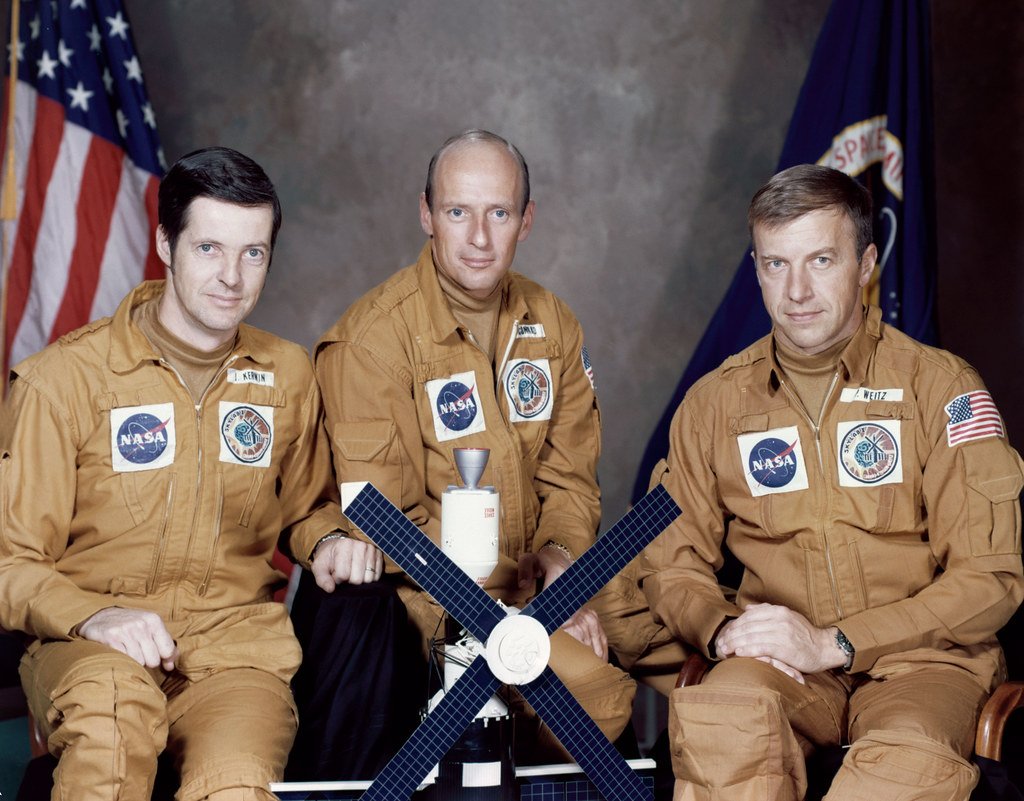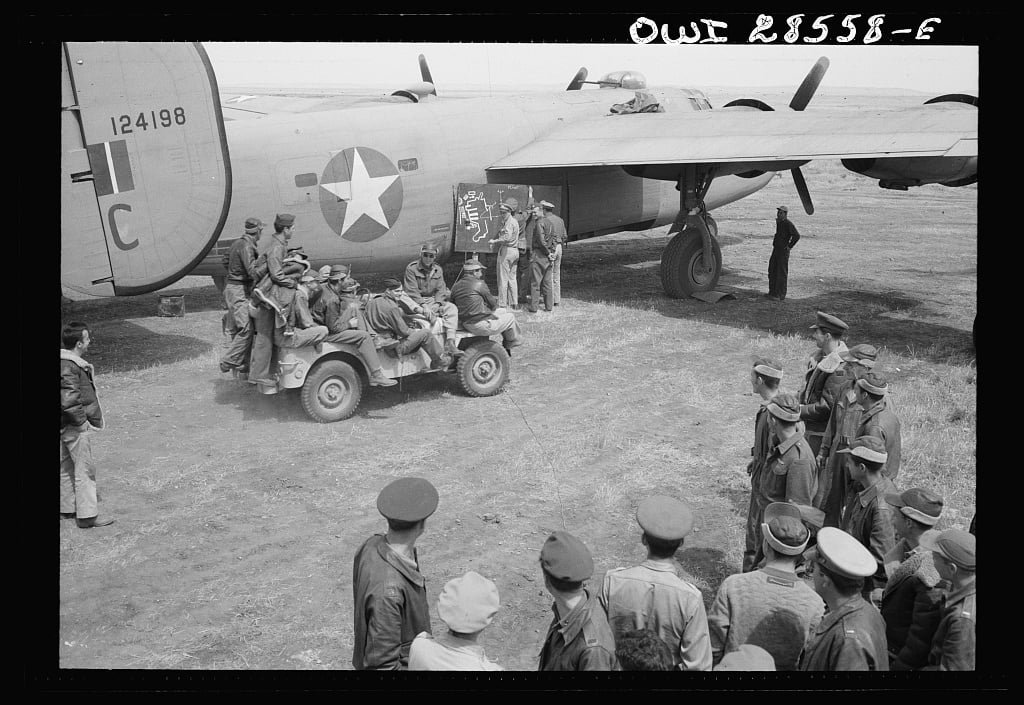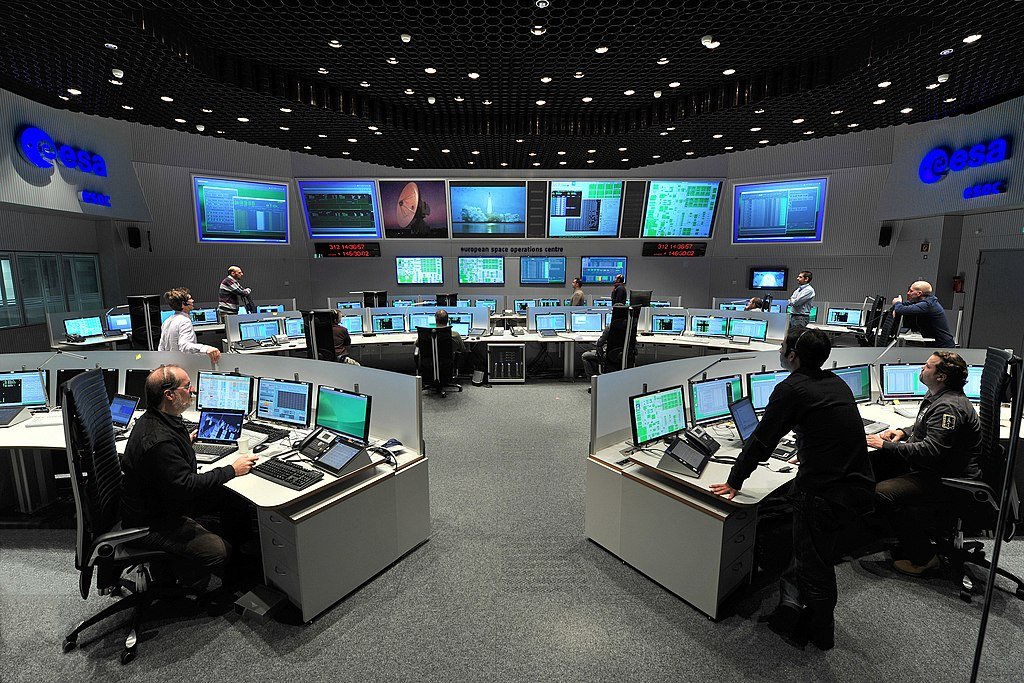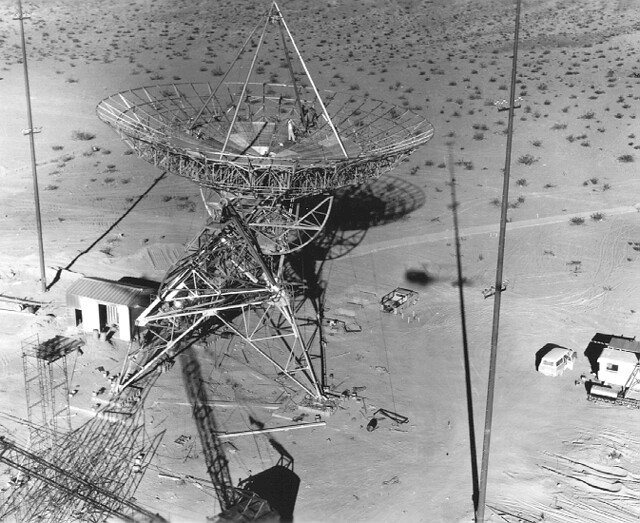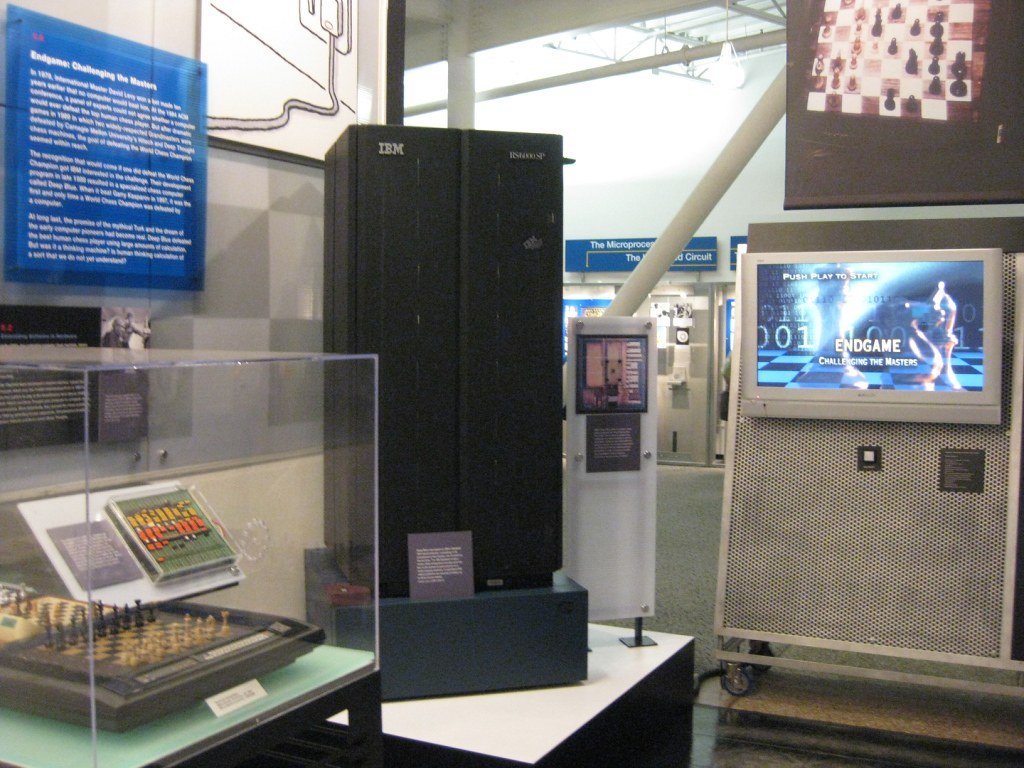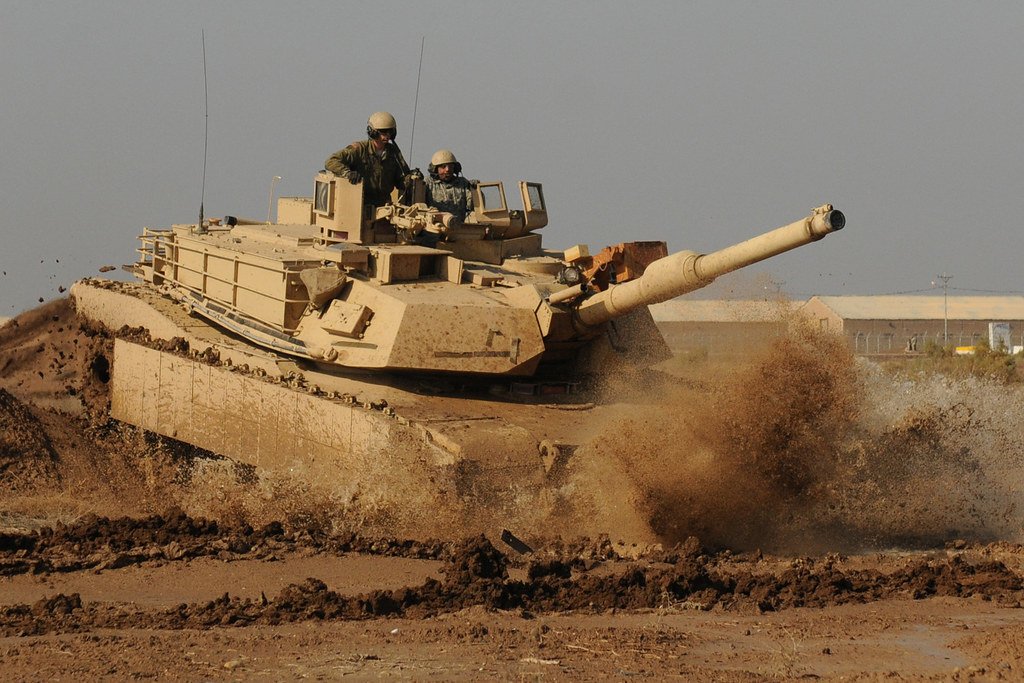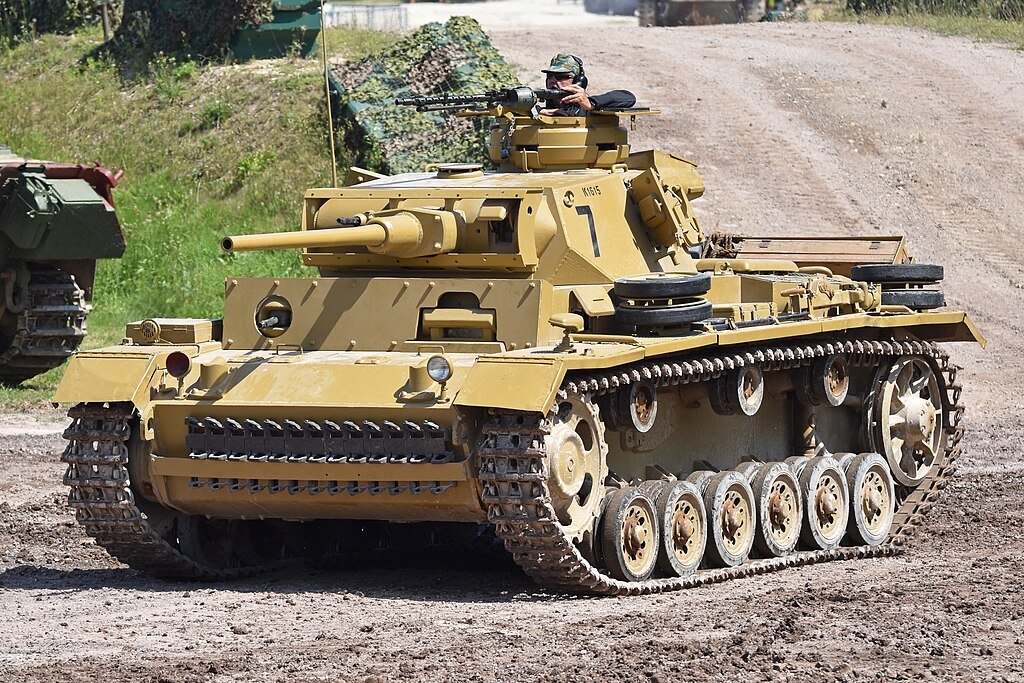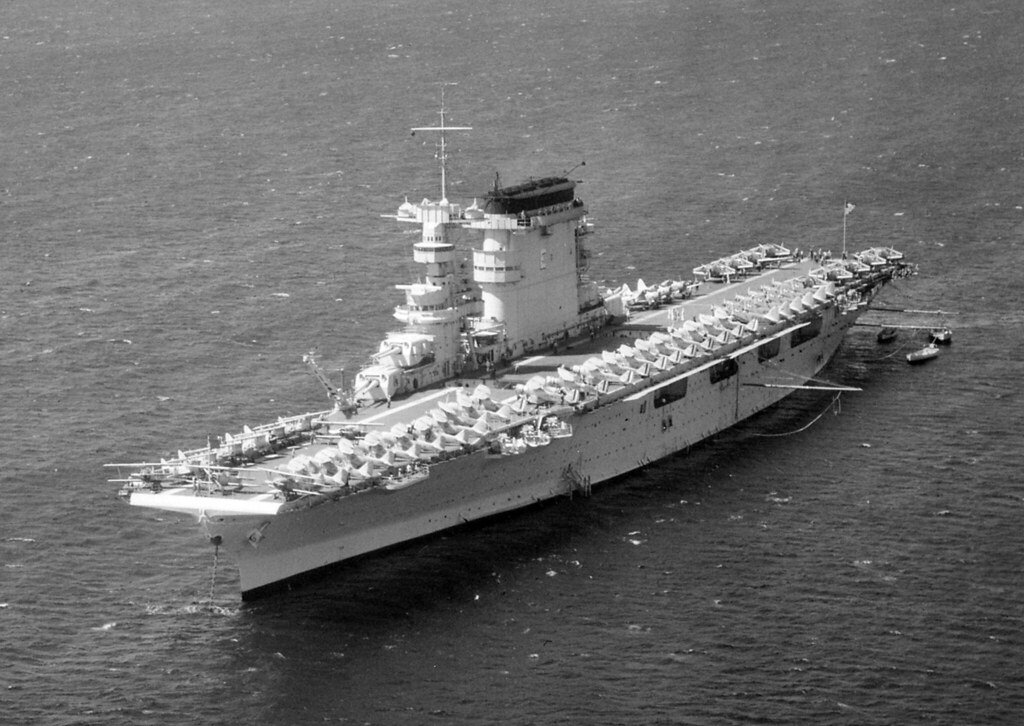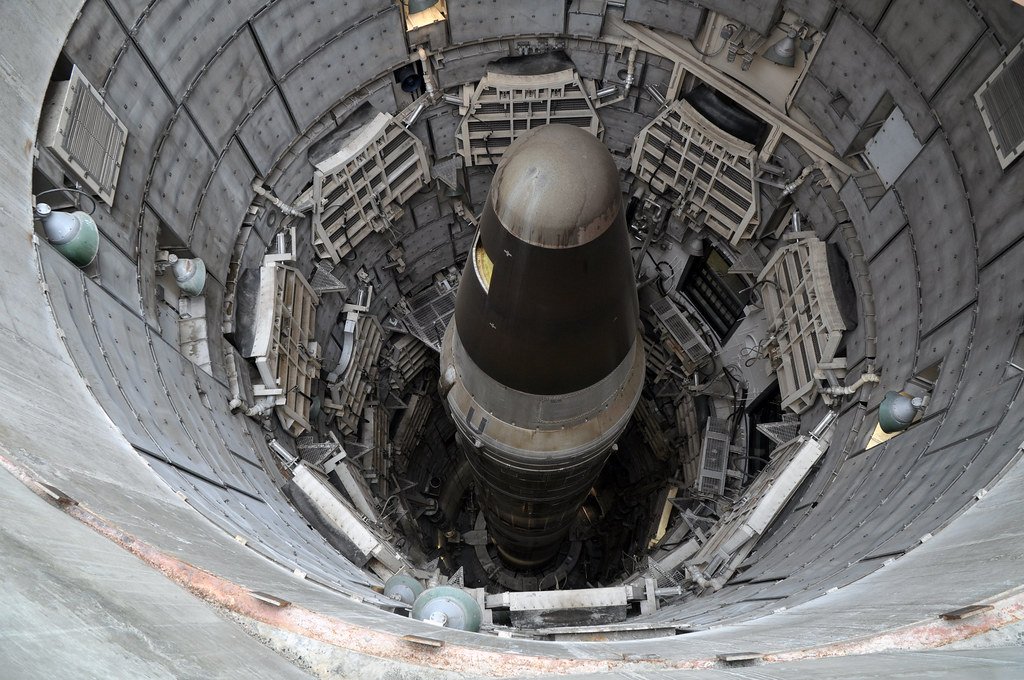In the realm of modern warfare, where the thunderous clash of mechanized prowess shapes the theater of battle, few entities command as much respect and evoke as much awe as the M1 Abrams. Among the pantheon of battle tanks, the Abrams stands as an emblem of sheer power, technological supremacy, and battlefield dominance. Its legacy is not merely etched in steel; it is woven into the annals of military history as a testament to innovation, resilience, and strategic superiority.
The saga of the Abrams tanks emerges from a strategic imperative to revolutionize armored warfare. In the tumultuous landscape of the late 20th century, where the specter of conflict loomed large, the necessity to replace aging war machines became evident. The quest for a modern, agile, and impregnable battle tank culminated in the birth of the M1 Abrams.
What sets the Abrams apart from its contemporaries is its fusion of cutting-edge technology and battlefield-tested design. Crafted with precision and fortified with composite armor, this behemoth stands as an impervious shield against the fury of enemy assaults. The gas turbine engine roars to life, propelling this steel colossus across the terrain with unparalleled agility, transforming the battlefield into its domain.
Yet, it is not merely its imposing stature that defines the Abrams, but the symphony of its components—a state-of-the-art fire control system that bestows unerring accuracy to its 120mm smoothbore main gun. This lethal combination renders enemy armor obsolete, turning the tide of battle with unyielding ferocity.
From the scorching deserts of the Gulf War to the demanding theaters of contemporary conflict, the Abrams tanks have reigned supreme, carving a legacy as the epitome of armored might. Evolving through iterations like the M1A1 and M1A2, these tanks embody a relentless pursuit of excellence, continuously upgraded to retain their vanguard status in an ever-evolving battlefield landscape.
In the annals of military history, the Abrams tanks stand not just as machines of war but as symbols of technological prowess and unwavering strength—a testament to the evolution and indomitable spirit of modern battle tanks.
Table of Contents
Why was the tank named after Abrams?
The M1 Abrams tank was named after General Creighton W. Abrams, a highly regarded and influential figure in the history of the United States Army. Renowned for his exceptional leadership, strategic insight, and significant contributions to armored warfare, General Abrams left an indelible mark on the military landscape.
General Creighton Abrams played a pivotal role in shaping the modern U.S. armored forces during his illustrious career. He served in various capacities, including commanding armored units during World War II, where his innovative tactics and leadership skills earned him widespread recognition. His distinguished service continued through the Korean War and the Vietnam War, where he held key command positions and implemented strategies that significantly impacted the battlefield.

As the Chief of Staff of the United States Army from 1972 to 1974, General Abrams was instrumental in advancing the development and modernization of the U.S. military, particularly in advocating for the creation and enhancement of the M1 Abrams tank.
In recognition of his exceptional leadership, unwavering commitment to the advancement of armored warfare, and profound influence on the U.S. Army‘s armored capabilities, the decision was made to honor his legacy by naming the state-of-the-art main battle tank, the M1 Abrams, after him. This gesture served as a tribute to his remarkable achievements and enduring impact on the military history of the United States.
What is the most advanced tank in the world?
As of my last knowledge update in January 2022, the title of the most advanced tank in the world is often attributed to the Russian T-14 Armata main battle tank.
The T-14 Armata represents a significant leap in tank design, integrating cutting-edge technology and innovative features that enhance its combat capabilities.
This next-generation tank boasts several advanced elements, including an unmanned turret with an autoloading system, which reduces crew size and improves crew safety. Its armor is made from composite materials and utilizes reactive armor modules, significantly augmenting protection against various threats.
Furthermore, the T-14 Armata incorporates a sophisticated suite of sensors, cameras, and a digital battlefield management system, providing unparalleled situational awareness and target acquisition capabilities. Its 125mm smoothbore cannon is paired with advanced ammunition, offering superior firepower and accuracy.
Additionally, the tank is built upon a modular platform, facilitating potential future upgrades and adaptations. Its high mobility, propelled by a powerful engine, ensures agility and maneuverability across diverse terrains.
However, the determination of the “most advanced” tank can be subjective. It can vary based on specific criteria, operational contexts, and technological advancements that may have occurred after my last update. Several other nations, including the United States, China, and European countries, continue to develop and upgrade their tank fleets, vying for supremacy in armored warfare through ongoing advancements and innovations.
The History Of The Abrams Tank
The M1 Abrams, named in honor of General Creighton Abrams, stands as a pinnacle of armored warfare, renowned for its resilience, firepower, and technological advancements. Its storied history traces back to the late 1970s when it emerged as the vanguard of modern battle tanks, replacing its predecessor, the M60 Patton.
This formidable machine embodies a legacy of innovation and adaptability. Incorporating composite armor, a gas turbine engine, and advanced fire control systems, the Abrams revolutionized armored warfare upon its introduction in 1980. It became a cornerstone of the United States’ armored forces, showcasing its prowess in conflicts like the Gulf War, where its superior mobility, protection, and precision firepower were instrumental.
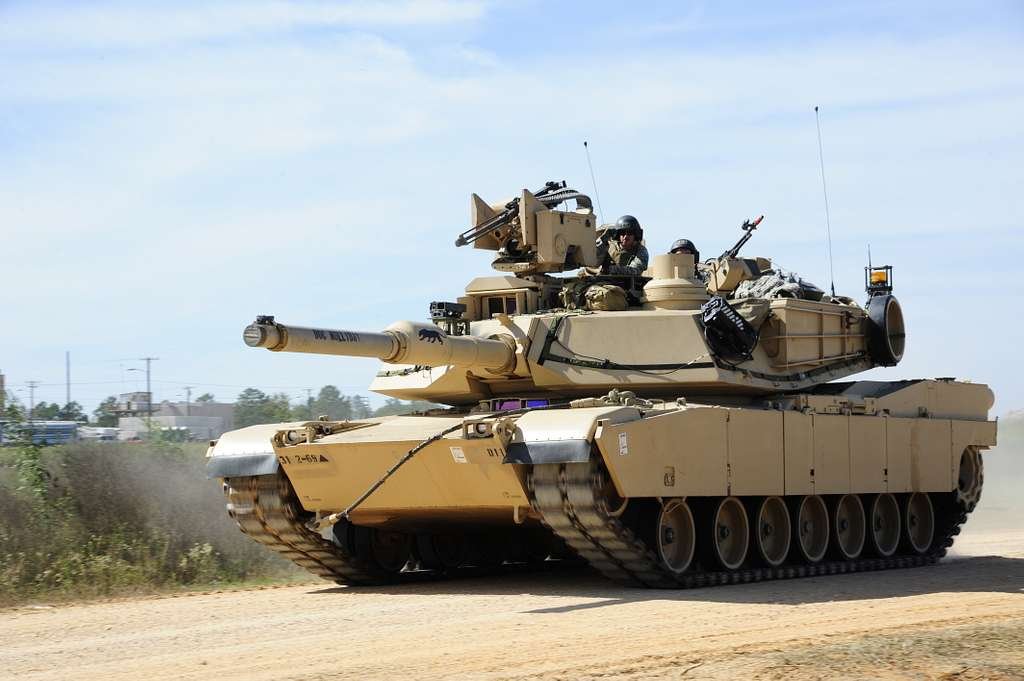
Over the decades, the Abrams underwent continual upgrades, evolving into variants like the M1A1 and M1A2, enhancing its capabilities and maintaining its status as a dominant force on the battlefield. Its global influence extends beyond the U.S., with various allied nations adopting this iconic tank, solidifying its reputation as a symbol of technological supremacy and battlefield superiority.
Development
During the late 1960s and early 1970s, the United States confronted the necessity of modernizing its aging arsenal of main battle tanks. The existing fleet, typified by the M60 Patton tanks, was becoming increasingly outdated in the face of evolving military threats and technological advancements.
Recognizing this imperative need for a revolutionary successor, the development of the M1 Abrams tank commenced in the 1970s. This endeavor aimed to create a cutting-edge main battle tank that would redefine armored warfare standards.
In 1979, Chrysler Defense, a division of the Chrysler Corporation primarily focused on military contracts, emerged victorious in securing the contract to manufacture the envisioned new tank. Subsequently, General Dynamics Land Systems, which later acquired Chrysler Defense, played a pivotal role in bringing the M1 Abrams to fruition.
The M1 Abrams represented a paradigm shift in tank design and capability. It integrated innovative features such as composite armor, a gas turbine engine, and advanced fire control systems, setting a new benchmark in armored vehicle technology.
This development marked a significant milestone in the evolution of American military hardware, heralding an era where the M1 Abrams would come to symbolize the pinnacle of armored superiority on the modern battlefield. Its introduction reshaped the dynamics of armored warfare, showcasing a fusion of cutting-edge engineering and tactical prowess that would endure for decades to come.
Features and Innovations

The M1 Abrams was a significant leap forward in tank technology. Some of its key features and innovations included:
Composite Armor
The M1 Abrams, a pinnacle of modern armored warfare, revolutionized tank design with its innovative use of composite armor. This composite armor system is a sophisticated blend of diverse materials strategically layered to create an exceptional defense mechanism against a wide array of threats prevalent on the battlefield.
Designed to withstand formidable challenges, the Abrams’ composite armor integrates materials like depleted uranium, ceramics, and steel. This amalgamation of materials serves a multifaceted purpose, countering different types of threats encountered in combat scenarios.
Against kinetic energy penetrators—high-velocity armor-piercing rounds—the composite armor dissipates the incoming energy through its layered composition. The combination of materials helps disperse and deflect the impact, minimizing the penetration potential and safeguarding the crew and critical systems within.
Moreover, in the face of shaped charges—explosive warheads designed to focus energy into a concentrated jet—the composite armor’s layered structure disrupts and disperses the focused energy, mitigating the effectiveness of the shaped charge and reducing its ability to breach the tank’s defenses.
This innovative armor design significantly enhances the survivability of the Abrams tank on the battlefield, providing a formidable shield against a spectrum of threats. The continuous evolution and refinement of composite armor technology have solidified the Abrams’ reputation as one of the most heavily protected and resilient main battle tanks in the world.
Gas Turbine Engine
The M1 Abrams tank stands as a technological marvel in the realm of armored warfare, primarily owing to its unconventional yet groundbreaking choice of propulsion: the gas turbine engine. In a departure from the prevalent use of diesel engines in tanks, the Abrams embraced this innovative power source, revolutionizing its performance metrics and battlefield capabilities.
The utilization of a gas turbine engine within the Abrams tank conferred several distinct advantages, most notably its exceptional power-to-weight ratio. This engineering marvel generated a substantial amount of power while maintaining a comparatively lower weight, resulting in unparalleled mobility and agility on the battlefield. The gas turbine engine’s ability to swiftly propel the Abrams across diverse terrains, from rugged landscapes to urban environments, became a defining feature of this formidable war machine.
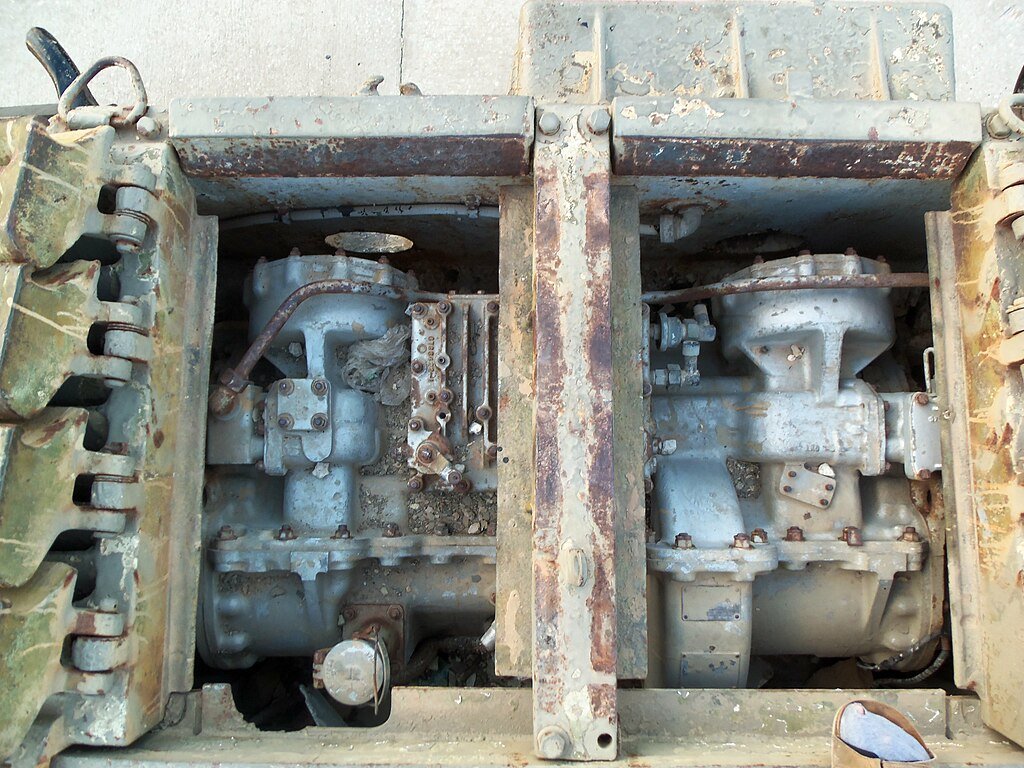
Moreover, the gas turbine engine provided the Abrams with rapid acceleration, crucial in combat scenarios where swift maneuvers are imperative. Its capability to swiftly change speeds, reverse, and traverse challenging landscapes with ease augmented the tank’s tactical prowess, enabling rapid response and positioning during engagements.
Despite the advantages, the gas turbine engine presented unique challenges, such as high fuel consumption and increased heat signature, which could potentially make the tank more vulnerable to certain types of detection. However, its advantages in terms of power output, mobility, and responsiveness cemented the gas turbine engine as a groundbreaking innovation that significantly contributed to the Abrams tank’s status as a dominant force on the modern battlefield.
Advanced Fire Control System
The Abrams tank, renowned for its exceptional combat capabilities, was equipped with state-of-the-art targeting and fire control systems, elevating its precision and effectiveness on the battlefield. At the heart of its prowess lay a sophisticated suite of technologies designed to provide unparalleled accuracy and the capacity to engage targets even while in motion.
The tank’s advanced fire control system integrated a suite of sensors, including thermal imaging, laser rangefinders, and ballistic computers. These components worked harmoniously to swiftly identify and track targets, compensating for various environmental conditions such as dust, smoke, or low visibility.
One of the Abrams’ most remarkable features was its ability to maintain accuracy while on the move. Leveraging gyro-stabilization technology, the tank’s turret and main gun remained steady, substantially reducing the destabilizing effects of rough terrain or rapid movements. This stabilization allowed the crew to acquire and engage targets swiftly and accurately, even while traversing uneven or challenging landscapes.
The synergy between the tank’s systems not only facilitated precise target acquisition but also enabled the crew to fire accurately while mobile—a crucial tactical advantage in dynamic battlefield scenarios. This capability provided the Abrams tank with a strategic edge, ensuring its ability to engage threats swiftly and effectively, whether stationary or on the move, solidifying its reputation as a formidable force on the modern battlefield.
Main Gun
The primary armament of the M1 Abrams, a 120mm smoothbore gun, stands as a pinnacle of destructive precision and versatility, enabling the tank to assert dominance over both armored adversaries and fortified positions with remarkable efficacy.
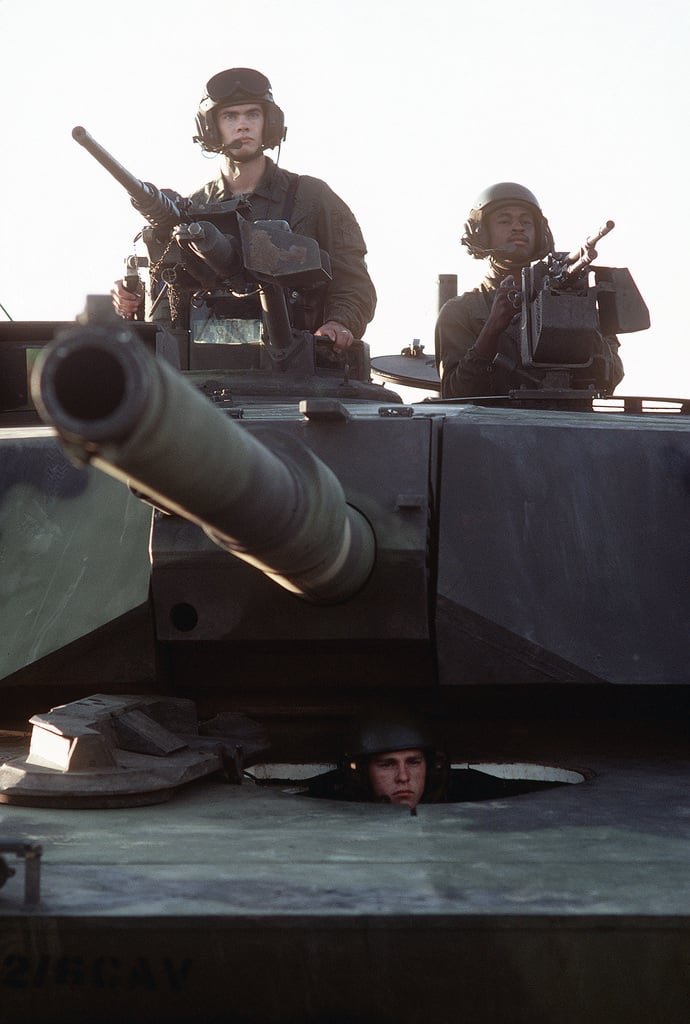
Crafted to exacting standards and honed through rigorous engineering, this formidable cannon embodies the essence of cutting-edge firepower. Its 120mm caliber, paired with advanced ammunition types, grants the Abrams a formidable punch capable of penetrating heavily armored targets. The smoothbore design ensures enhanced accuracy, allowing for precise targeting of enemy vehicles and fortified emplacements even at considerable distances.
The versatility of the 120mm gun is manifest in its ability to engage various types of threats. From enemy tanks to fortified bunkers, the gun’s adaptability and firepower make it a versatile tool on the battlefield. Whether employing armor-piercing rounds to neutralize heavily armored opponents or utilizing high-explosive shells to dismantle entrenched positions, the 120mm gun offers a spectrum of devastation.
Its effectiveness was notably demonstrated in conflicts such as the Gulf War, where the M1 Abrams showcased its capability to engage and eliminate enemy armor with remarkable success. The 120mm smoothbore gun, coupled with the tank’s advanced fire control systems, grants the Abrams an unparalleled edge in engaging and neutralizing threats across diverse combat scenarios, solidifying its status as a premier force on the modern battlefield.
Service and Evolution
Since its inception into service with the United States Army in 1980, the M1 Abrams tank swiftly became a stalwart presence on the battlefield, showcasing its prowess in a multitude of conflicts. Its pinnacle moment arrived during the Gulf War in 1991, where it emerged as a game-changer, highlighting its unparalleled superiority in firepower, mobility, and protection.
However, recognizing the evolving nature of warfare and the necessity to adapt to emerging threats, the Abrams underwent a series of relentless upgrades and modernizations. These enhancements aimed to fortify its capabilities across crucial aspects of combat, ensuring its relevance and effectiveness in contemporary warfare scenarios.
The evolution of the Abrams was comprehensive, targeting key areas for enhancement. Upgrades in armor composition and design were pivotal, bolstering its defensive capabilities against increasingly sophisticated threats. The incorporation of advanced electronics and targeting systems greatly augmented its precision and situational awareness, enabling more accurate engagements with targets.
Moreover, continuous improvements in firepower, including ammunition upgrades and advancements in its 120mm main gun, bolstered the tank’s offensive capabilities. Meanwhile, enhancements in mobility, such as engine upgrades and suspension modifications, ensured the Abrams remained agile and adaptable across diverse terrains.
These upgrades and modernizations collectively transformed the Abrams from an already formidable machine into a cutting-edge, adaptable, and resilient asset, allowing it to maintain its position as one of the most formidable main battle tanks globally and ensuring its continued relevance in the dynamic landscape of modern warfare.
Variants
The evolution of the M1 Abrams tank has resulted in the development of several variants, each meticulously engineered to address specific operational requirements and to integrate technological advancements. Among the notable variants are the M1A1 and M1A2, along with their subsequent iterations, each representing a pinnacle of armored warfare innovation.
The M1A1 Abrams entered service in the 1980s, heralding a new era in tank capabilities. It featured notable improvements over the base M1 model, primarily incorporating the powerful 120mm smoothbore gun and depleted uranium armor, significantly enhancing firepower and protection.
Building upon the success of the M1A1, the M1A2 variant marked a substantial leap forward in tank technology. Equipped with advanced digital systems, improved fire control, and enhanced armor, the M1A2 further elevated the tank’s combat capabilities, offering increased accuracy, better survivability, and superior situational awareness on the battlefield.
Subsequent sub-variants of the M1A2, such as the M1A2 SEP (System Enhancement Package), introduced continuous upgrades to maintain the Abrams’ status as a cutting-edge armored platform. These enhancements included improved thermal sights, upgraded electronics, network integration capabilities, and further armor enhancements.
Additionally, specialized variants have been developed to fulfill specific roles, such as the M104 Wolverine recovery vehicle based on the Abrams chassis, showcasing its adaptability beyond combat operations.
The ongoing evolution and diversification of the Abrams tank variants signify a commitment to staying at the forefront of armored warfare, ensuring adaptability to changing battlefield dynamics and fulfilling diverse operational needs with unparalleled precision and effectiveness.
International Influence
The Abrams tank’s reputation as a premier main battle tank extends beyond its service within the United States. Recognized for its formidable capabilities, the tank has been exported to several allied nations, fortifying its standing as a symbol of military might and reliability worldwide. Countries such as Egypt, Saudi Arabia, Australia, and various NATO allies have procured versions of the Abrams tank to bolster their armored forces.
These export models often incorporate specific configurations and enhancements tailored to the requirements of the purchasing nation. The decision by these allied countries to adopt the Abrams underscores their confidence in its combat prowess, advanced technology, and proven track record in diverse operational environments. By integrating the Abrams into their military arsenals, these nations benefit from its exceptional firepower, robust armor, and cutting-edge features, contributing to a collective reinforcement of global security and defense capabilities.
The Abrams tank stands unwavering as a pivotal asset within the U.S. armored forces, embodying an enduring emblem of cutting-edge military prowess and unparalleled firepower. Its steadfast presence symbolizes the zenith of technological advancement in armored warfare, reflecting a legacy built upon continual evolution and strategic upgrades.
Remaining resolute in its stature, the Abrams tank has upheld its position as an indomitable force on the global stage. Through successive enhancements and adaptations, it has fortified its reputation as one of the foremost and revered armored vehicles worldwide. Its robust capabilities, from superior armor protection to its state-of-the-art fire control systems, substantiate its resilience and efficacy in diverse operational landscapes.
As conflicts evolve and new challenges emerge, the Abrams persists as a testament to innovation and adaptability. Its continued relevance and effectiveness serve as a testament to its enduring legacy, ensuring its place as a cornerstone of armored warfare, both in the annals of history and on the modern battlefield.

